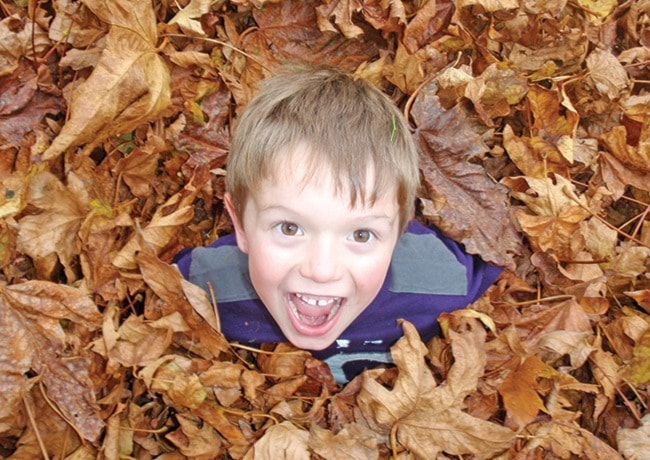SHIRLEY EPPLER
Special to The NEWS
Nothing announces a change in the season more than falling leaves.
Who doesn't have a memory of jumping in a freshly raked pile or kicking up big maple leaves on a trail through the forest, collecting the biggest leaf you can find and pressing it in a book? While fall can bring back childhood memories, it also signals gardeners that it's time to put the garden to bed and prepare for a long winter of gazing at garden magazines and scouring the seed catalogues.
Fallen leaves are often overlooked as a beneficial addition to the garden. A lot of us were brought up with the view that neat and tidy is good and everything has to be in its place. In the garden we tend to want to control it all, to clean up what we see as being unsightly. Our anxiety level increases as we watch leaves drifting down on our picture perfect landscape. Mother Nature thinks differently and she's been doing this for a lot longer than any of us and doing it quite successfully.
When left alone, leaves fall off the tree to the forest floor where they decompose and become part of the earth, conditioning the soil and adding a layer of protection. Leaves also increase and help maintain colonies of beneficial organisms, fungus and bacteria which in turn create a healthy environment for plants. Earthworms love leaf mulch, too.
When we rake up all the fallen debris and leave bare, exposed soil Mother Nature will inevitably fill it up with something and more likely than not it will be with weeds.
A leaf mulch will help suppress weeds, aid in erosion control, insulate the soil and retain moisture. When we remove this protective layer we disturb the natural balance of the garden.
If you absolutely can’t stand the natural look of leaves left lying where they’ve fallen in the garden there is a way to use them and still gain the benefits later on. You can rake up all the leaves and either pile them in a corner or use a wood or wire bin about three feet wide and tall. Let them decompose over time, adding water through the drier months to keep the break down going. Turn the pile once in awhile with a pitch fork. Once the pile has turned into a nice, crumbly leaf mold (sounds bad but it really isn’t) then you can either spread it on the garden as mulch or dig it in.
If you don’t have a bin or don’t want to commit to something semi-permanent for a season or two then another method is to use a large garbage bag with a few air holes punched along the sides. Check it for moisture periodically also as you need the leaves to be moist to help the process. I haven’t tried this personally but have been told it works.
Large leaves tend to break down more slowly and can sometimes form a mat on the ground or in the pile. If you have a mulching mower then run it over the pile of dry leaves a few times or toss them in a shredder. The more cuts in a leaf the more quickly it will break down. Even just scrunching dry, brittle leaves in your hands will help.
Either method will take about six months to a year to break down completely. Don’t be afraid to use it earlier if you can’t wait that long, it doesn’t need to be broken down fully to be beneficial. If you’re not growing a winter cover crop in your vegetable garden then use the leaves there.
So this fall let nature take its course and in turn she will reward you with healthier soil and less work weeding.
— Shirley Eppler is the owner of Cultivate Garden & Gift at 609 East Island Hwy. in Parksville. E-mail: shirley@cultivategarden.com
